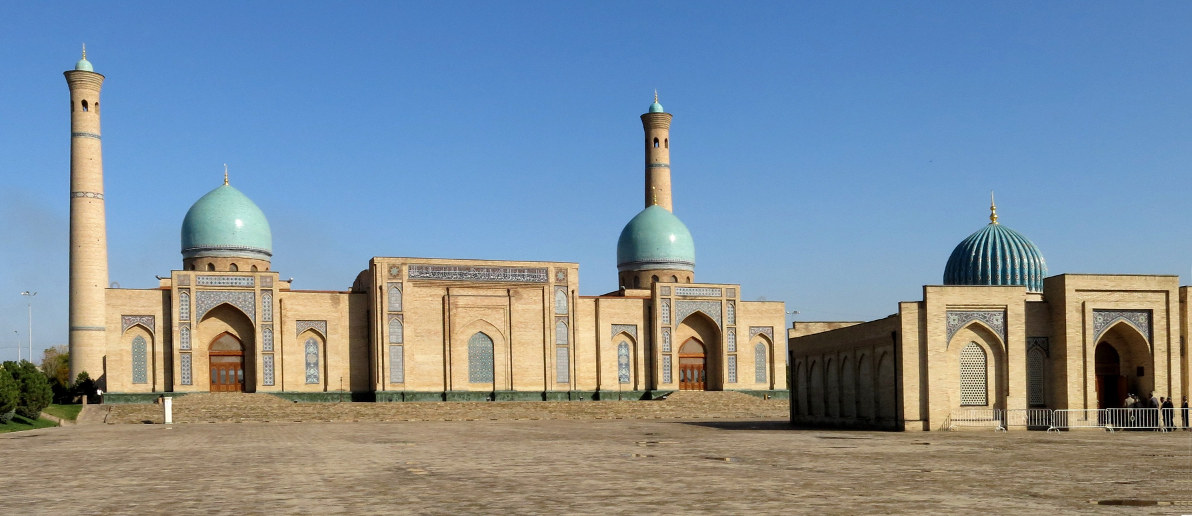Where is Uzbekistan?
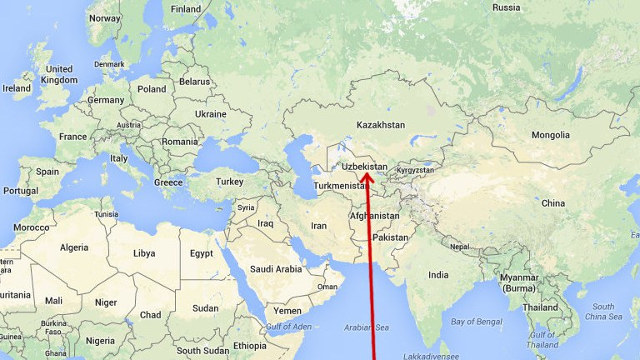
Some routes of the Silk Road
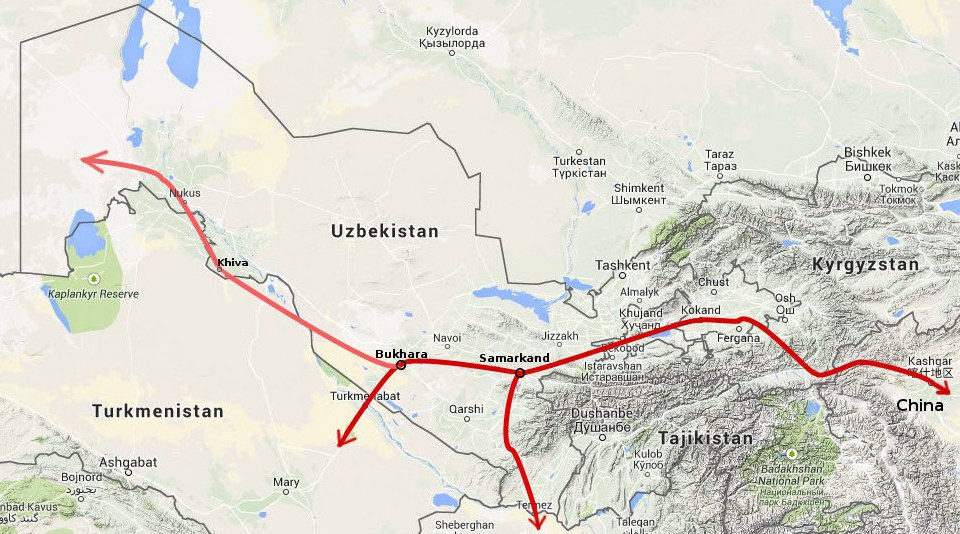


In 1888, the future Lord Curzon travelled to Samarkand and described the Registan as "the noblest public square in the world", although the buildings were neglected and crumbling. Since his day, they have been repaired and restored to their original splendour.
Samarkand was an important city on the Silk Road in Alexander's time 2,300 years ago, but it was destroyed several times in Central Asia's turbulent history. The oldest remaining buildings date from the time of Timur (Tamerlane), who made Samarkand the capital of his 14th-century empire, and his immediate successors.
"Registan" means "Sand place", and the space between the buildings was not paved originally, but apart from that, the restorations aimed to reproduce the original appearance of the buildings as closely as possible. The three buildings around the Registan are madrassas (places of study). The oldest is the one on the left in the first picture below, the Ulug Beg Madrasah, built in the early 15th century, a centre of secular science during Ulug Beg's reign. The other two (the Tillya Kori and Sherdor Madrasahs) were built in the 17th century.
 |
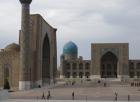 |
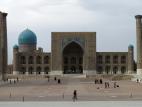 |
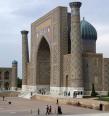 |
 |
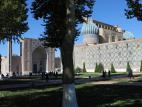 |
 |
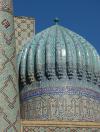 |
The Shah-i-Zinda is a complex of mausoleums in Samarkand. It was the site of a very old tomb, but its present form dates from the 14th century when Timur, Ulug Beg, and their successors buried family members here. The tilework decorating the mausoleums is extraordinary.
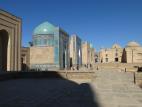 |
 |
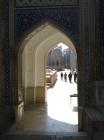 |
| Individual mausoleums are tall and narrow and all about the same size, but each has its own decoration on the façade. | ||
 |
 |
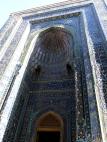 |
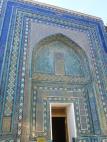 |
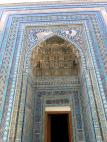 |
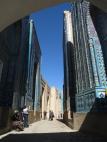 |
 |
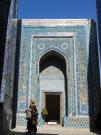 |
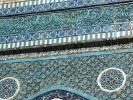 |
The remains of Timur himself are not at Shah-i-Zinda. He intended his own mausoleum to be at his birthplace, Shakhrisabz, about 70km from Samarkand, across the Zarafshan mountains. Unfortunately when he died (winter 1405) the passes across the mountains were blocked with snow, so he was interred in Samarkand, in a mausoleum originally intended for a grandson, who died in 1403.
The remains of two other sons, Ulug Beg, and a respected teacher are also here. Timur's marker is the very dark one near the centre of the picture on the right, below. The actual remains are in a crypt underneath the mausoleum.
 |
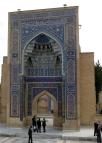 |
 |
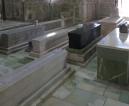 |
Timur's home town.
The remains of Timur's grandiose summer palace, built between 1380 and 1404, most of which collapsed over 200 years ago.
 |
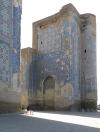 |
Bukhara has been a centre of commerce since at least 500 BCE, but it has had a turbulent history and no buildings from that time survive. It was also a centre of learning in the Islamic world.
| The first madrassa in Central Asia was built here in 1417 by order of Ulug Beg, and its design seems to have been a model for many successors. | 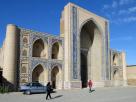 |
The citadel (known as the "Ark") used by the rulers of Bukhara dates from the 5th century, though it has been damaged and rebuilt several times. From 1785 to 1920 it was the seat of the Emirs of Bukhara, who ruled over the region around Bukhara, including Samarkand, until 1868. In 1868 they lost most of their territory, but continued to rule Bukhara itself until 1920.
The inner walled town of Khiva, the 'Itchan Kala', is very well preserved - some say it is too well preserved, having the atmosphere of a museum city. The foundations of the mud-brick wall around it were laid in the 10th century, but the present walls and the gates date only from about 1800, as do many of the buildings inside the old city. This may not seem very old, but they embody an atmosphere which is much older. The region around Khiva was an independent absolute monarchy for most of the period 1511 to 1873 (when it became a Russian protectorate) and the monarchy retained a mediaeval way of life.
The centre of Tashkent is spaciously laid out, with imposing modern public buildings and wide (4 lanes each way) roads around a public park containing a heroic statue of Timur. It looks more like California than central Asia.
This is the Timur museum, just outside the park.
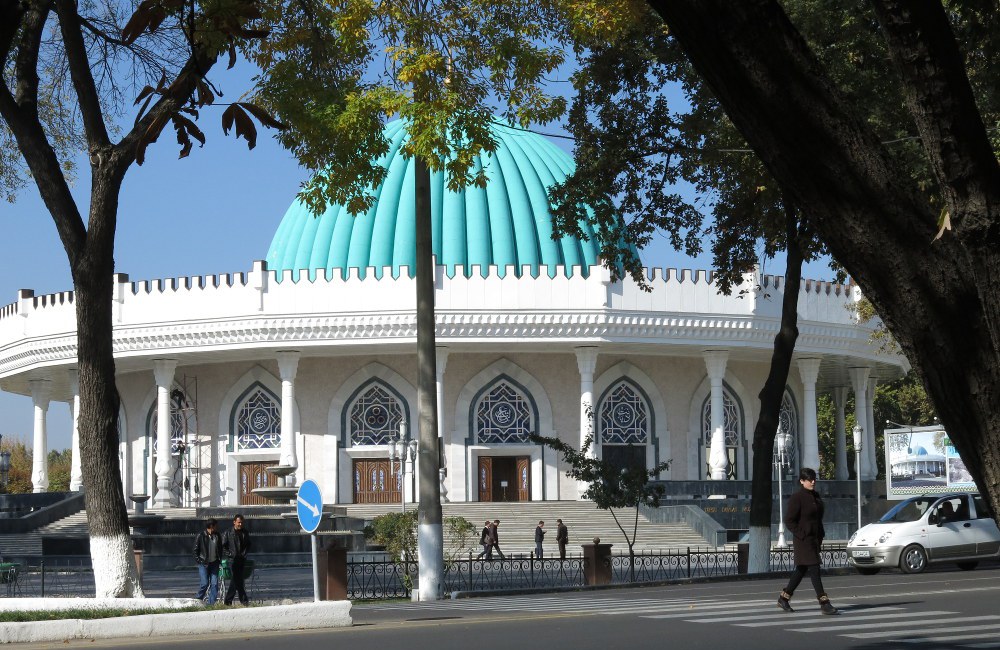
The buildings of the Khast Imam complex in the old part of the city have a more traditional look. Actually, the mosque (in the background) is modern, having been built in 2007, but its library (the smaller building on the right) houses the oldest known copy of the Koran, written in the 7th or 8th century.
